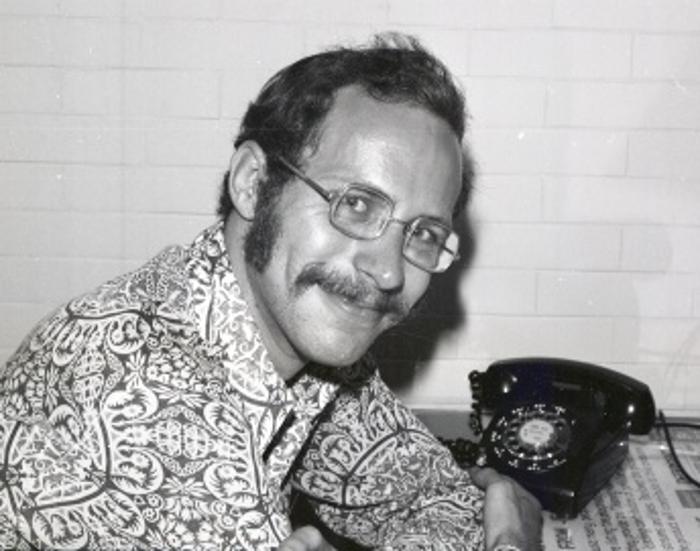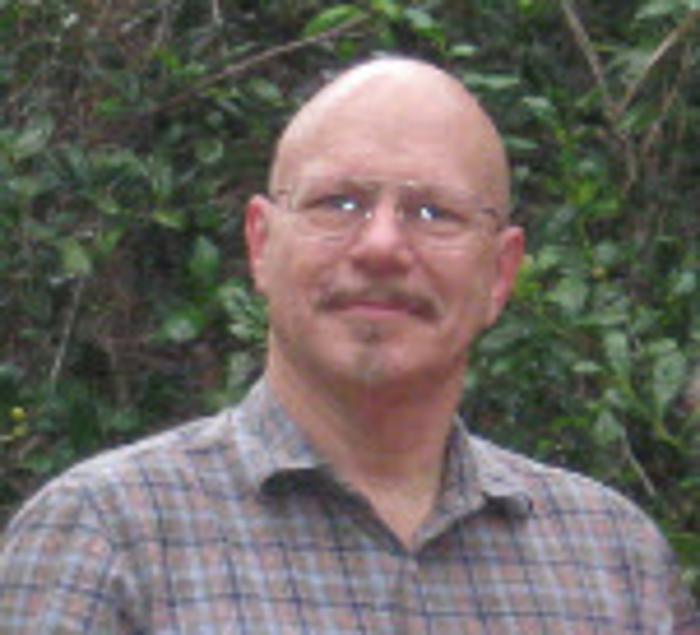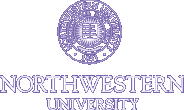JIM ROBIN
Then:Northwestern Chemistry graduate student, NSBE member: air pollution committee, speakers bureau.

Now:
B.A., Chemistry, University of Colorado; M.S., Ph.D., Northwestern, Chemical Physics; M.B.A., University of Chicago.
Jim left NU for a while during his graduate studies to teach part-time and work in administration at Kendall College. He then returned to NU to complete his dissertation. Mark Ratner was able to take over as Jim's adviser after Jim's original advisor returned to Germany. Jim then completed his M.B.A at the University of Chicago. Jim's interest shifted from chemistry to computers, and he went to work at Exxon Chemical Company as Staff Systems Analyst (Project Management, Application Development, LAN and desktop operations, or as he puts it, "Master of Obsure Technologies.") He currently works for ExxoMobile Global Services as a Computer Operations Advisor.
Jim is married and has three children; active in many service organizations, he is also involved in ExxonMobil's Science Education Ambassador Program, is an aerobics instructor and an avid cyclist.

How did you get involved with NSBE?
"I was in grad school in Chemistry. I belonged to the sailing club, and was going out on the water with Casey Jason. We were looking at weather formations. (While I was an undergrad at U. of Colorado, I worked at the National Center for Atmospheric Research) Casey was telling me about this organization (NSBE), and said, "We're looking for someone to handle air pollution." I said, "Ok - sign me up!"
The air pollution committee was one of NSBE's ad hoc committees, which were technically oriented and tackled specific problems. The problem Jim Robin worked on was pollution coming from the coal fire plants, Commonwealth Edison, sulfur emissions, particularly from the steel mills south of Chicago. While he was an undergraduate, he would go up in a plane and take air samples with a "freezing nuclei counter" looking for particulates that have an effect on weather formation. "We heard that they were getting good readings at University of Chicago because of the proximity to the steel mills."
"As we were flying over the lake, the pilot said, ‘that looks like a good one' - it was a plume with an orange color. As soon as we took that scoop of air into the cylinder, it was like a blizzard inside. We wrote a letter to U.S. Steel and informed them of our results, but they ignored us. I later ran into a friend who worked in the steel industry and told him about this - he said, ‘oh, yeah - that's where they melt down old cars - sometimes they forget and leave in a battery.' What the mills were emitting was lead iodide."
"Prof. Jimmie Quon and I worked with Commonwealth Edison on a position paper - it was a win/win situation. It was important to involve the industry, if they would get involved. It was all about the timing - and in just a couple of years, they instituted reforms that were suggested by NSBE. Our paper was titled 'On Achieving Clean Air."
"Later on we (NSBE) received $5,000 from Comm. Ed. to help build our library. Aggressive environmental groups thought we'd sold out - but you have to work with the people in the organizations where you want change."
Memories of the Project Survival event:
"During the Project Survival event, I was in charge of the press. I set up my office for the interviews. WBBM did live broadcasting of the entire event." Jim was in the background, dealing with set-up and logistics. "I remember there were people everywhere - in the lobbies, the halls, the rooms."
Jim was part of NSBE's speakers bureau, which was in high demand at this time. "I went out and talked to groups about air pollution as part of the NSBE speakers bureau. I spoke to the Society of Petroleum Engineers and told them, ‘there are a lot better uses for petroleum than burning it.' They should have been looking for alternative forms of energy back then. ‘What we're doing is messing it up for ourselves - we're the ones that we need to be worrying about in all this.' I also spoke to the National Geographic Society - there were 2,000 people there. Our speaker's bureau was made up of primarily grad students and a few faculty. Our focus was that we were looking for solutions, not just complaining. It has to be a partnership."
Thoughts on activism:
"The (environmental) movement paralled the anti-war movement - there were a lot of places to get involved, to do something positive, build awareness where there wasn't any. This was the time of the Cuyahoga River fire, and people were beginning to sit up and take notice."
"You know, you can't just go off waving signs and complaining - you have to get in there and work with people who aren't going away - work with legislation, affect practical change. Otherwise you're just part of the background noise. Build the case for what we need to do and then do what is needed to get it accomplished."
